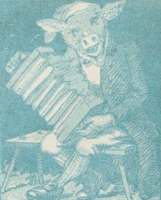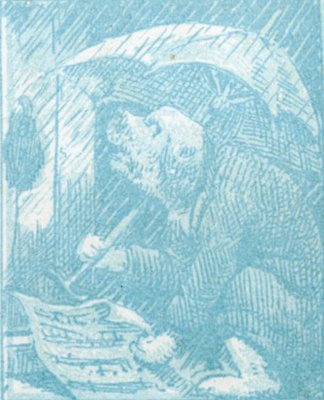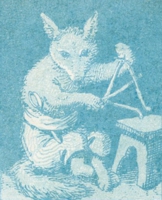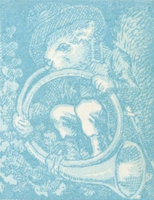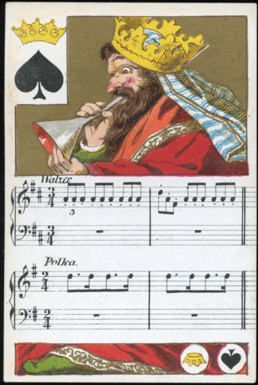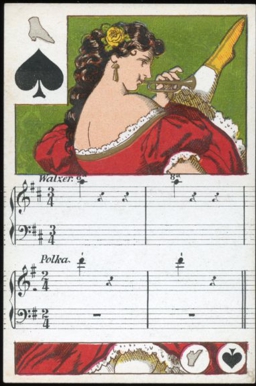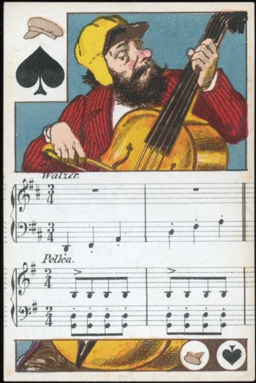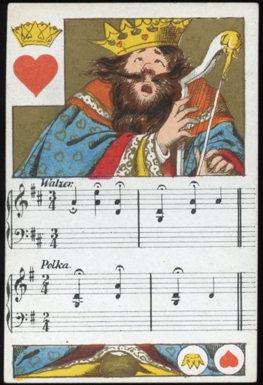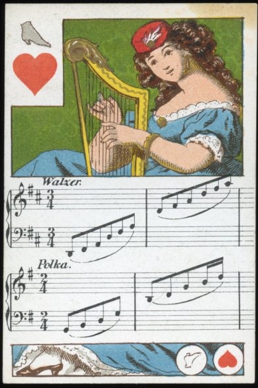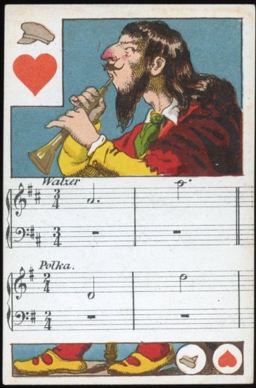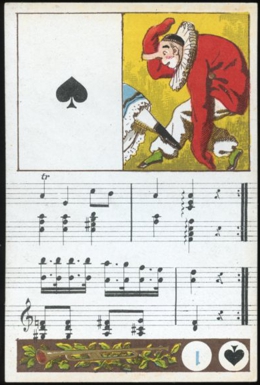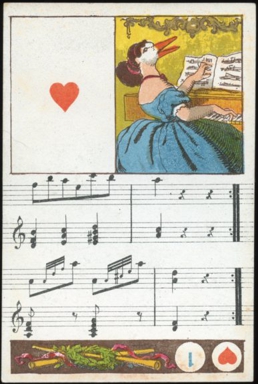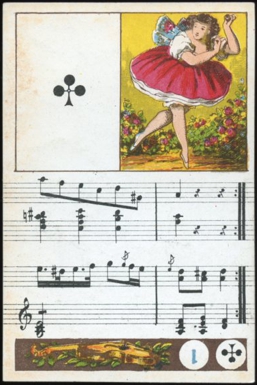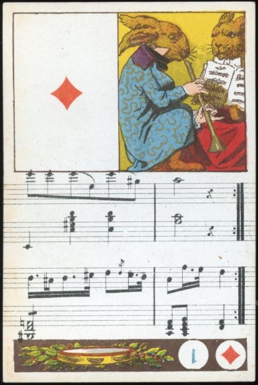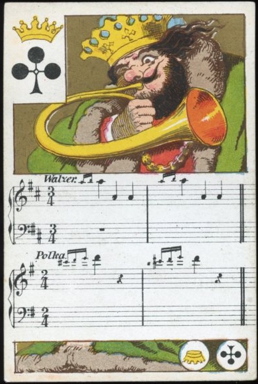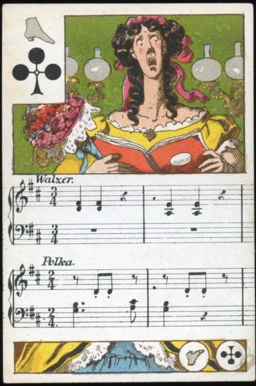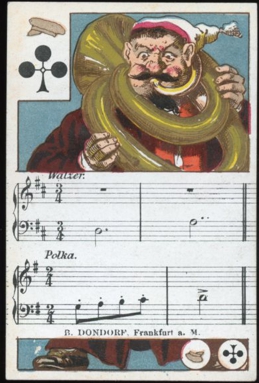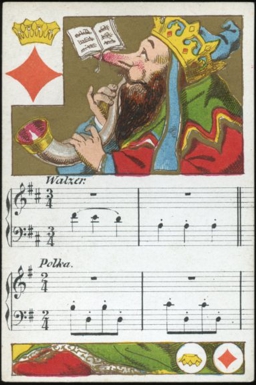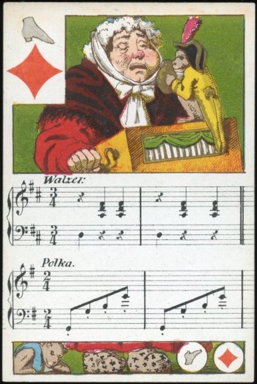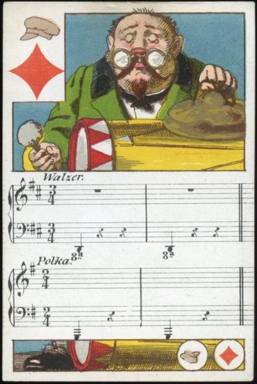September
2022
As
this deck was most likely created by the same artist as the "Cartes
Comiques" (03-22), Braun dates this deck as c1860 too. He doesn't mention a
factory number, because he didn't have the box. Schultz/Stolzenburg did have the
box and in their book about Dondorf they show one of the sides of the box, which
mentions No. 227. It also mentions the title of the deck: "Cartes
Enchantées Musicales". The number and part of the title are missing from
the side of my box, shown at the bottom of this page. The other side of the box
promises an infinite number of dances (nombre infini de danse). The front of the
box shows the humor of the artist, when he warns "beware of counterfeit and
the ears" and shows a figure terrified by noise. This could have been a
valid warning too about the conclusion of the convention diner, but that's a
different story.
The
musical deck doesn't appear in the 1885 pricelist, while the Cartes Comiques are still
mentioned there. Of course there are several plausible explanations for that,
but I believe that the main reason could be that musical decks were only in
fashion for a short while and Dondorf decided not to make a second edition of
this deck, as they did with the Cartes Comiques. However, I find these musical
cards delightful and humorous.
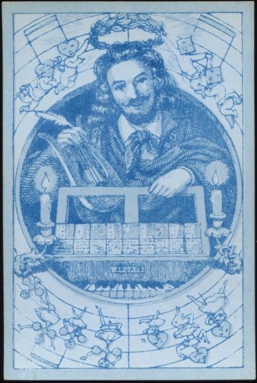 |
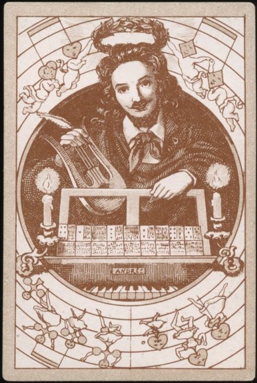
|
|
The
D7 has a different coloured back, which didn't bother me as much as it
usually does, as it is only one card and it shows the other version of the
back. |
The deck also came with parts
of the original box and a leaflet in French and German.
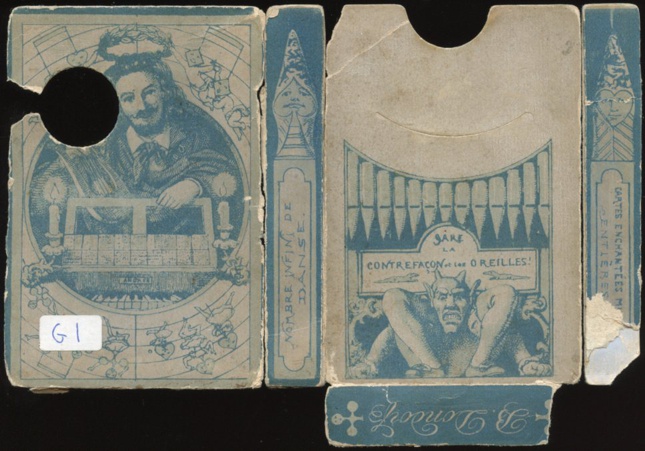 |
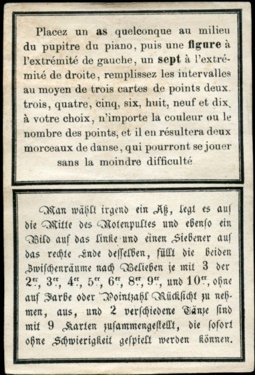
|
|
Description
how to place the cards to get 2 musical pieces. By changing the pip cards, one
can create lots of different musical pieces. |
|
BACK TO
PRESENT MONTH |
Place
an ace in the middle, then a court card further away to the left and a 7
further away to the right. Then fill the space between court and ace and
ace to 7 randomly with 3 pip cards on either side. It should result in 2
musical pieces (a Waltz and a Polka), not difficult to play. |
